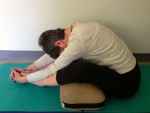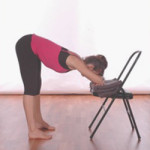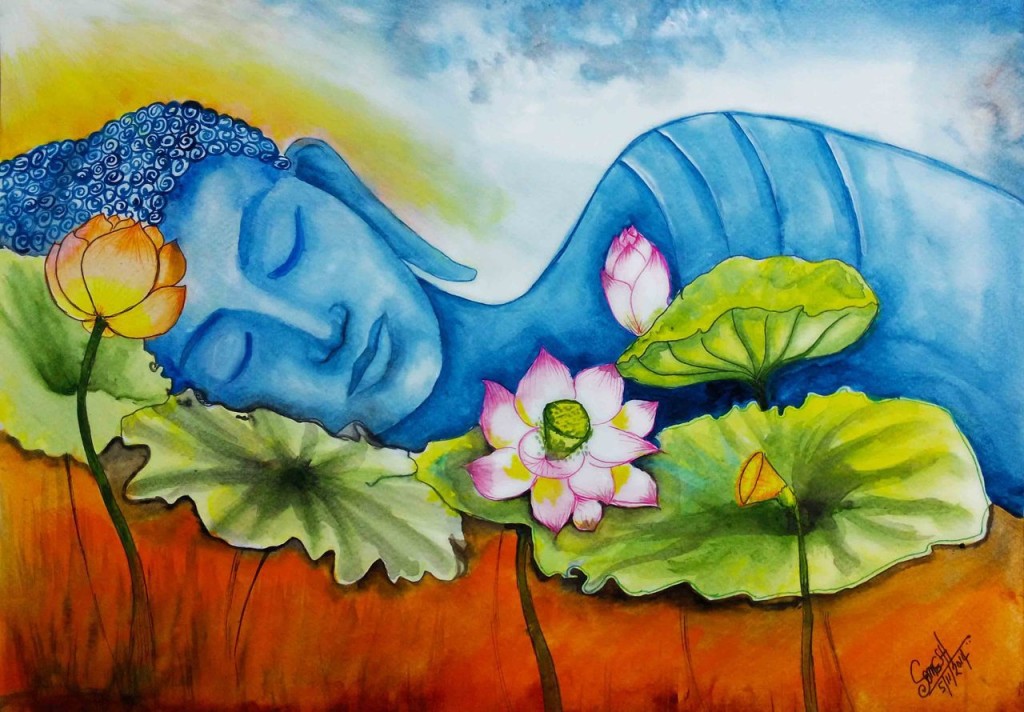 On many yoga websites and posts online you can find yoga poses to help you sleep. Even though these poses are useful, it takes a long time, about 4-6 weeks, before you can truly experience the benefits of just doing the poses and nothing else. In any case is it a great part of your bed time routine.
On many yoga websites and posts online you can find yoga poses to help you sleep. Even though these poses are useful, it takes a long time, about 4-6 weeks, before you can truly experience the benefits of just doing the poses and nothing else. In any case is it a great part of your bed time routine.
But before you start your asanas or yoga poses, it is important to take note of the following sleep preparations.
- Don’t drink coffee or other caffeine containing drinks after midday.
- You may need a magnesium supplement, which is well known to support the adrenal glands, relax stressed muscles and nerves, and promote quality sleep.
- Make sure to get some exercise during the day. Being outdoors is very beneficial. A walk after dinner could be a good thing.
- Have only a light evening meal and wait at least 2-3 hours before preparing for sleep.
- An hour before you go to sleep, turn all your devices off (phone, tablets & computers).
- Reading before bed is ok, as long as the book is not too stimulating, avoid reading thrillers at this time. Although some people like to continue thinking about the development of the story line, which gives them a thought focus to help them get to sleep. Work out what is best for you.
- A cup of hot chocolate, warm tumeric milk or camomile tea with honey seems to work for many people. Any of these are with a try. To make tumeric milk add 1 tsp of tumeric powder and a pinch of ginger powder to one cup of warm milk (cow’s, coconut, almond, soya or rice milk). Warm the milk with the powders and add a tsp of honey. This milk also aids in settling of the digestive system.
- Watch your fluid intake before bed though, because it’s not conducive for continuous sleep, if you need to get up in the middle of the night to visit the bathroom.
- Avoid having stimulating conversations/discussions. Keep these discussions for the morning.
- Some studies have shown that poor head posture can contribute to poor breathing habits (mouth breathing and over-breathing) and therefore indirectly contribute to poor sleep. So check your posture during the day and make sure you breathe through the nose as much as possible.
- A little lavender oil on your pillow or having a bath with Epsom salts (high magnesium content) before bed, may do the trick for you.
- A Himalayan salt lamp may help insomnia as it releases negative ions in the air, which are conducive to sleep and well-being. Have the lamp on for about 2 hours before you go to sleep.
I recommend you practice the following poses as part of your bed time routine/ritual:
2. Seated/standing forward bend. In cross-legged position slowly bend forward, let your s h
h oulders and head drop forward towards your knees (you may like a pillow on your lap or under your knees) and stay in the pose for about 7 breaths. Alternatively you can stand next to your bed and fold forward, resting your arms on the bed and your head on top of your arms. If your knees are ok, you could child’s pose as an option too.
oulders and head drop forward towards your knees (you may like a pillow on your lap or under your knees) and stay in the pose for about 7 breaths. Alternatively you can stand next to your bed and fold forward, resting your arms on the bed and your head on top of your arms. If your knees are ok, you could child’s pose as an option too.
3. Legs up the wall or on the bed. Lie on your back on your bed with your legs up the wall or o n your bed, arms to the side, eyes closed and focus on your breath, slowly the breath right down for about 10-20 breaths or more.
n your bed, arms to the side, eyes closed and focus on your breath, slowly the breath right down for about 10-20 breaths or more.
With the physical work done, you could add some pranyama practice:
By far the easiest breathing you can do to slow down your exhalations in order for the relaxation hormones to kick in, is straw breathing. You can lie down or sit up. Hold a straw between your lips (use at least one hand to hold the straw) breathe in through the nose and exhale through the straw, making sure no air escapes through the nose on exhalation, so close your epiglottis in the back of your throat when exhaling. Make sure to use a medium type straw. Too thin or too wide a straw is not as effective.
Set your phone timer to about 10 minutes for your straw breathing practice. It really is worth getting bored here. Accept the boredom. Boredom is good, just focus on your breath. Find your breath to be the most interesting thing.
Tips for when you are actually in bed
When you have decided it is time for sleep and you are lying in bed, always remember the following:
- Keep your eyes shut, even if you can’t sleep. Keeping your eyes closed blocks out 90% of distractions and turns you attention inwards. Closing your eyes gives your mind a sensation of rest.
- Stay in bed, even if you can’t sleep. Resting the body is important. If nothing else, you are giving your body the rest it needs.
- Accept the fact that you have trouble going to sleep. Accepting and not fighting or feeling worried/disappointed that you cannot sleep already gives the mind a rest.
- Surrender to the notion that you are lying in bed with your eyes closed, but trust that, even though sleep is not feeling imminent, it will approach at some stage.
Stick to the 4 rules above and then you can keep your mind occupied with any of the following:
- Progressive muscle relaxation – Scan your body and if you are still feeling tense in your body start tensing and relaxing your body parts from your toes up to your head. Inhale to tense and exhale to release. Breathe one complete breath ( IN and OUT) before moving to your next part. (1.Curl toes, 2. toes to nose, 3. toes away from nose, 4. press legs down, 5. press lower back down, 6. shoulders down, 7. head down, 8. fists, 9. scrunch face)
- Another way to relax the body is to listen to a Yoga Nidra tape or visualize the practice by visualizing each part of your from right to left, starting with your right hand thumb to your left little toe. Then do the same on your left.
- Practice Gratitude – Remember some thing that happened in your day or in your life that you are grateful for. Things that gave you joy. Relive them, perhaps even a couple of times. Then say the sentence quietly in you head: “I am grateful for……fill in.”
- Counting – listen to your breath and count to 5 on inhalation, 5 on exhalation and pause for the count of three at the end of your exhalation.
- Self-hypnosis – Imagine yourself to be in a lift and press the down button, say the word down repeatedly to yourself, creating a sinking feeling into the softness of your bed.
- Create a train of thought, based on a creative aspect in your life. Whatever you enjoy doing, imagine doing that a little more, even if you are taking yourself on the best imagined holiday. Imagine that into all the details and remember it form the beginning to the end and again, if necessary. Keep at it until you fall asleep.
- Momentarily think of some a problem that may be coming into the foreground of your attention. Accept its existence. Ask for guidance from your Higher Source. Ask for the answer to come to you in the morning. Surrender to it. If this problem is a worry imagine the worst possible outcome and accept that is possible. But then focus on the best possible outcome and project this outcome to the universe, so you imagine this outcome to be real. Make this outcome into a positive statement and repeat this a few times. Some examples are: My family is safe, I will pass my exams, I am healthy and able, All will be good, I am achieving inner peace.
If not tonight, then tomorrow night … keep believing that sleep will come.


